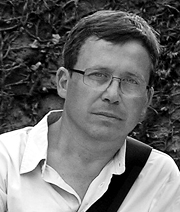Julià Espinàs
Barcelona, 1954
In the 1980s he was in charge of the design of the architecture magazine A30 and of numerous publications of the Association of Architects of Catalonia, also designing the graphics and the setting-up of exhibitions for the same association and the first exhibitions held in the Centre for Contemporary Culture of Barcelona (CCCB). From 1994 to 1996, together with Olga Tarrasó he was in charge of the graphic communication and the design of the ephemeral installations of the Congress of the International Union of Architects UIA Barcelona 96. In 1991, together with the architect Olga Tarrasó,...
In the 1980s he was in charge of the design of the architecture magazine A30 and of numerous publications of the Association of Architects of Catalonia, also designing the graphics and the setting-up of exhibitions for the same association and the first exhibitions held in the Centre for Contemporary Culture of Barcelona (CCCB). From 1994 to 1996, together with Olga Tarrasó he was in charge of the graphic communication and the design of the ephemeral installations of the Congress of the International Union of Architects UIA Barcelona 96. In 1991, together with the architect Olga Tarrasó, he set up the design, architecture and landscape studio Espinàs i Tarrasó Associats S.C.P., where they develop mainly public space projects such as Badalona Sea Front, the Urban Development of the Covering of the train depot of the High-Speed Train station in Lleida and the Covering of the Castelldefels Dual Carriageway on passing through El Prat de Llobregat. Jointly they have also designed numerous lighting and street furniture elements, such as the Bancal bench (2000) and the Bilateral bench (2005), produced by Santa & Cole.
